#i was your spp!!!
Explore tagged Tumblr posts
Text
TSUGI NO GAKUSHOU WA
(Eichi SPP)
#sorry this is late i needed to ger his mv outfit and yours truly-#-ran out of mv crystals#eichi tenshouin#tenshouin eichi#enstars#ensemble stars#enstars spp#dawning angels#leo speaks
15 notes
·
View notes
Text
some things will probably never happen (izumi sena ballet routine to dernière danse by indila) but i can dream
#god the fucking. whatever the spin is he does in his regular 4 star spp for silent oath. that would be perfect#specifically for the 'danse danse danse danse danse danse danse' bit#and the same with je m'envole vole etc#izumi sena#puddle talks#enstars#leo if you see this i feel like this post would be up your alley
7 notes
·
View notes
Text
Between Desires

Notes: This was supposed to be a fic about massaging Ratio. This fic is not about massaging Ratio. Steal for AI or anything else and I'll make sure your bathwater is forever infected with Legionella spp. Tags: Dr. Ratio x fem reader, irresponsible bath behaviour, mostly fluff, oral f receiving, established relationship, nsft end, 1.7k Minors DNI

"-came to the conclusion that while each perceivable object was, on a grander scale, made from incomprehensibly small pieces, all of them identical, order had been imposed on the system to-"
A little twitch and the following motions of the warm bathwater had Veritas diverting his attention from the pages down to where you rested between his legs. Only then did he notice the soft snores accompanying your breathing. To say the sound and sight of you so relaxed made his heart soar would be an understatement.
As long as you weren't swallowing bathwater again.
Although Veritas would've preferred for you to stay awake, somewhere down the line, he had become quite accustomed to your small interruptions. Huffs, chuckles, sighs, questions, corrections. Your curious mind was something to be treasured, some of your commentary insightful in ways that had Veritas questioning the value of all his titles and diplomas.
The foam had all but dissipated and your scented candles almost fully burned down, the intermingling fragrances heavy and comforting in the air. A trip past the artisan who made both would be due soon. He set the book down onto the small bench beside the tub, finding himself no longer in the right frame of mind to read.
Veritas had long since had to accept that between savoring how perfectly your curves slotted against him and enjoying a book by himself, the first would always come out on top. It was an entirely different matter when you were listening as well, of course.
If the old theories of a cosmic mind and the nature of all material had been true, then Veritas had no doubt he was made of the same as you, his being constantly drawn in by yours. Just as how both of his hands had unconsciously sought the softness of your stomach, thumbs tracing the wet skin with the reverence of an artist touching a masterpiece.
Not his masterpiece. No, you did not belong to anyone but yourself, and Veritas considered himself blessed to have you so close. Blessed in far more important ways than an Aeon's gaze could ever grant.
Vanilla invaded his senses after pressing a tender kiss to your wet hair, unfortunately, the taste of soap that followed had him tensing with effort to suppress a cough.
"Mmm… I'm listening…" Your words were a little slurred, your sleepy mind probably thinking he'd cleared his throat to get your attention.
A small smile tugged at his lips, arms fully encircling your waist to maneuver you properly onto his lap, "Of course, so what do you think?"
"What I think?" Veritas couldn't help but smile at the uncertainty in your sleepy voice. He guided your head back, carefully bringing a handful of water up to rinse the remaining soap from your wet strands. "I think someone is trying poke fun at me."
"Do you now?" Warmth bloomed in his chest at the sight of your hand reaching behind your head, the familiar playful tug of his hair making it impossible to keep from smiling into your hair, "by preemptively assuming the intentions of others, we become less inclined to recognize non-verbal cues, subsequently hindering genuine interactions."
Barely had Veritas processed your unimpressed hum before a splash of lukewarm water doused him. "And childish attempts at deception are rewarded with equally immature retaliations, plaster-head."
After wiping his eyes, Veritas could no longer resist the urge to curl around you, letting his lips trail gently along the curvature of your shoulder and licking up a few droplets of water. Only when your breath came out shaky did he pull away, taking a moment to appreciate how perfectly his palms cupped your chest.
There were numerous reasons to despise how easily blood pooled in his lower half, the simple pressure of your thighs enough to have his skin burning and mind buzzing. Countless unfortunate situations had arisen and been narrowly avoided due to how easily you affected him. A fleeting kiss, a teasing whisper, a light brush of hands. All of which had caused him to throb with desire in the past, just as he did now, burying his head back into the crook of your neck.
But no inconvenience mattered in the face of your content hums, not even the knowledge that continuing to rut against your thighs while submerged in water would leave his skin irritated for at least a day. Under normal circumstances, Veritas would be the one holding his desires back until both your comfort was guaranteed, even as need seared every nerve in his body.
Which was exactly why feeling you pull away had his eyes widening. Water sloshed against the sides as you stood, leaving Veritas to frown despite the tantalizing view of shadows dancing across your backside as you stretched. "Better get out before I fall properly asleep, or you turn into a raisin, whichever comes first."
A raisin. He huffed in (mostly) faux indignation, running pruney fingers through his hair before hoisting himself up as well, "Some would argue the heavy snoring earlier was indicative of already being 'properly asleep' as you say," he carefully stepped onto the fuzzy bathmat - acquired to combat your complaints about cold feet despite being a breeding ground for microorganisms - reaching for a pair of towels and pressing one into your outstretched arms.
He went rigid with anticipation at the light press of your body against his back, mind readily abandoning the jars lined up on the counter and letting the years of practiced movements take over. If there had been awards given out for restraint alone, Veritas deserved it for getting through the deep breaths it took to have his half hard member not jump at the first sign of attention. "Hurry," your breath danced along his skin, "or I truly will be asleep before you can join me."
Had he been a simpler creature, Veritas would not have hesitated to abandon rime and reason to follow at your heel. The vision reflected in the mirror was not one of myth, not an elven girl dancing and laughing in a marsh, shrouded by mist just waiting for someone to ensnare in their madness. Your back was turned, no gaping hollow anywhere to be seen.
Still, based on ability alone, the accusation wasn't entirely without merit - you had at least captured and ensnared him without any trouble. Three of four applied, cleanse, toner, serum, moisturizer. The eye cream wouldn't be necessary today. Hadn't been for a few weeks.
Veritas couldn't help but snort quietly to himself at the sight meeting his eye upon stepping out from the bathroom. Fae creature his foot. There was nothing graceful or even remotely elegant about your current predicament. Face down on the bed and spread out like a sea star. And somehow, it was all the more appealing to him. What need was there to drape your body in silks and jewels when nothing could be as beautiful as the story told by every mark life had left.
If sayings were to be taken literally, Veritas' heart would have collapsed in on itself long ago with how tightly it squeezed. Knowing exactly what was needed to resuscitate him, little time was wasted lingering further. Observation constitutes a sound first step in most investigations, but Veritas had already taken six with determination to cross the room, knees swiftly making contact and sinking into the mattress.
"So slow…." You whined, the sound regrettably going directly to Veritas' groin.
He couldn't help but smile at the string of content sighs that followed his lips' featherlight path along the back of your thigh. So delicate beneath him, Veritas kissed the raised lines adorning your legs, the ones that always had you fretting, before moving further up the bed. It was all he could do to not immediately cage you in as he leaned down to whisper in your ear, "Memento vivere."
Despite your proclaimed exhaustion, your hips raised with both speed and precision, drawing a soft gasp from Veritas' lips at the teasing press. "Mm, yes well.. To the late are left the bones.."
Oh Aeons above, your sleepy voice was driving him mad.
As soon as his hands had found their home on your hips, it was impossible not to give a tentative thrust forward, just enough to have him shuddering at your inviting heat. It treaded the narrow path of his desire, not the scalding heat of coffee nor the faint whisp from a candle. Before you had time to complain, for he knew you would at his withdrawal, Veritas had moved to kneel behind you, inhaling the heady scent of your arousal.
No matter the choice of fragrance you chose to rub into your skin, honey, almond, roses, berries, vanilla, you'd gone through a plethora of variants over the years, nothing could rival what met him upon gingerly parting your slick folds. One arm had already wrapped securely around your thighs, knowing how you always squirmed at first.
Veritas couldn't help but groan at the first languid pass of his tongue, gathering up your essence to taste. It always stroked his ego how you shivered, even more so when your hole clenched to eagerly ask for more. So much practice and observation had gone into knowing precisely the pressure and angle at which to nose your clit to keep those exquisite sounds from pouring forth.
Clearly, your exhaustion had been quite honest, not even bothering to put up a display of embarrassment as you usually did.
Instead, he felt an amused grin tug at his lips when your hips rocked back to chase the tip of his tongue. The only thing to lament as Veritas continued to work you open on his tongue was how the position wouldn't allow for observing your expressions.
"Veri-," your whine barely pierced his concentration, fingers moving to properly grasp your thighs, peeling back one work of art to better perceive another. "…more"
Usually, a 'please' should have found its way into your request (which would at this time have been denied regardless, for Veritas was far from satiated) but the picturesque arch of your body had him keen on heeding your desires. Just for today.
"Mm," his fingers tightened their grip, his heart fluttering at the contentment hanging in the air, "patience, remember?"
#dr ratio x reader#dr ratio x you#dr ratio x fem reader#ratio x reader#ratio hsr#dr ratio#veritas ratio x reader#hsr fanfic#hsr x reader#crow with a pen#cw nsft
158 notes
·
View notes
Text
I meant to post this earlier in the month, but in case you missed it, the monarch butterfly (Danaus plexippus) is going to be listed as a threatened species under the United States Endangered Species Act. It's a bit disappointing for those of us pushing for full endangered status because a threatened species doesn't receive as complete a set of protections. But it's better than nothing.
Monarch butterflies have seen a precipitous drop in numbers over the past few decades, to include both the western and eastern North American subpopulations. When I was a child in Missouri in the 1980s they were a common sight in our garden; that's not the case any more. The western subpopulation, found west of the Rocky Mountains, is much smaller than the eastern and so is at even greater risk of extinction.
As with most endangered species, habitat loss is the leading cause of population drop. While an adult monarch butterfly can feed from a variety of flowers, the caterpillars can only eat the leaves of milkweed (Asclepias spp.) No milkweed means no monarchs, and as open fields and meadows are increasingly paved over or turned into housing developments with sterile grass lawns, the monarchs have fewer and fewer places to lay their eggs. Climate change is also having a negative effect on monarchs; many died in last January's freezing temperatures that hit their overwintering sites in Texas and Mexico, and temperature variability also affects monarch reproduction.
While the ESA threatened listing is a move in the right direction, it's not enough. Existing monarch habitat must be protected, and lost habitat restored as much as possible. Even little pockets of native milkweeds for caterpillars, and other native wildflowers for the adults, can create important oases, so planting these species in your yard or on your porch can help monarchs and other native insects. Avoid non-native, tropical milkweed species, as these can host dangerous parasites. And keep pushing U.S. Fish and Wildlife to give monarchs full endangered status, while supporting organizations that advocate for these butterflies, like the Xerces Society for Invertebrate Conservation.
#monarch butterflies#butterflies#insects#invertebrates#arthropods#nature#wildlife#animals#environment#conservation#scicomm#endangered species#extinction#animal welfare
216 notes
·
View notes
Note
In theory, would an Endoparasite, given enough time co-evolving with its host, become an organelle or organ in time? Would that just transform it into a symbyote by definition instead? I ask this cause I've heard that's how eukaryote cells evolved (kinda, it's more like the smaller cells they absorbed did not get consumed instead)
Well, fun fact the word "symbiote" includes parasites anyway! It's a misconception that symbiote is the word for "the beneficial version." Symbiotes are any animals at all that depend on a deep relationship with another species, whether it means they help them out or they suck their blood all day and give them diseases! The helpful kind are just called "mutualistic symbiotes" and the detrimental kind are "parasitic symbiotes," but countless organisms blur those definitions in so many confusing ways that it's impossible to draw a line. For instance, we now know that many parasitic worms sequester so many toxic metals it must have always been of some benefit to their hosts, even before we started dumping more toxic metals into the food chain and have them working overtime these days:
That already feels a lot like the function of an organ! Kind of like how our bacterial biomes have been classified as "organs" too. But I know what you mean; a parasite becoming basically a permanent, attached part of what was once a host animal, passed directly to the host's offspring, just like a bigger version of where mitochondria came from. We don't know that that's happened just yet, but there are parasitic worms that start colonizing animals as soon as they're developing in the womb, and nearly all wild animal populations have a 100% constant presence of parasites their entire lives. So I think it's highly possible, really. Say a particular tapeworm mutated to where it's so good at that toxin absorption, it makes the host significantly healthier and stronger than its competitors? Then both creatures become that much more likely to pass on their genes together. Over many generations of this, if it proved beneficial enough, you could have a parasite that's barely recognizable as a tapeworm anymore, a sac of tissue that passes its larvae directly to the host's offspring, and the host's body could have even adapted designated places for these former parasites. They could totally look just like another natural organ until they were put under a microscope.
180 notes
·
View notes
Note
ID for this big friend we found in the back of our school? A friend said it was an "Eye Click Beetle", but I think I misheard, and would like a second opinion


Found in the Piedmont Triad region of North Carolina, if location helps. They were at least 2 inches long.
Thanks!
Your friend is an entomology expert!
Yes, this is the Eastern Eyed Click Beetle (Alaus oculatus), family Elateridae.
Alaus oculatus - Wikipedia
click beetles - Alaus spp. (ufl.edu)
Species Alaus oculatus - Eyed Click Beetle - BugGuide.Net
183 notes
·
View notes
Text

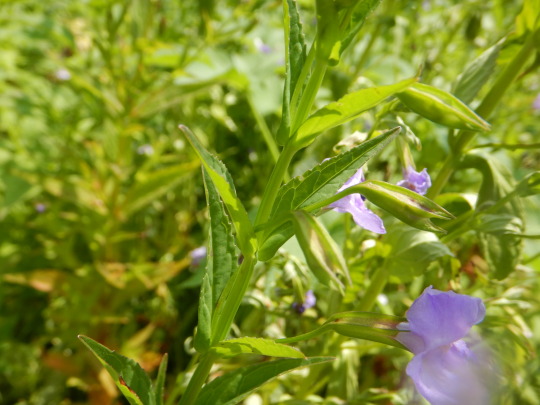
More from the gravel bars and mudflats, a type of riparian ecosystem of the Little Miami pt 2
Mimulus ringens, previous post had the other common species in this, these pictures show just how much larger the peduncle is comparative.
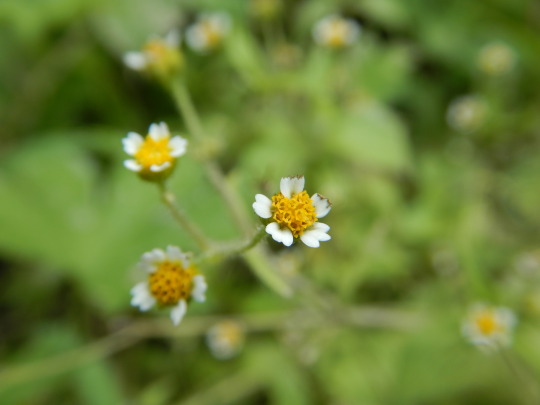

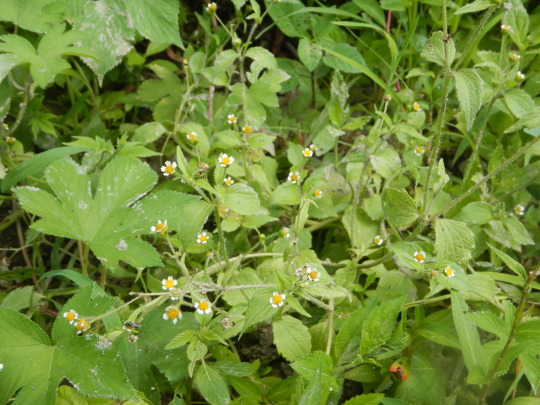
In a patch of Korean hops lies an introduced naturalized species known as Galinsoga quadriradiata or the shaggy soldier. (on broken bar)

Phyla lanceolata, lance leaf fog fruit , If your from Ohio we call it Frog Fruit; a native species perfect for bioswale planting and riparian restoration. Great stabilizer.
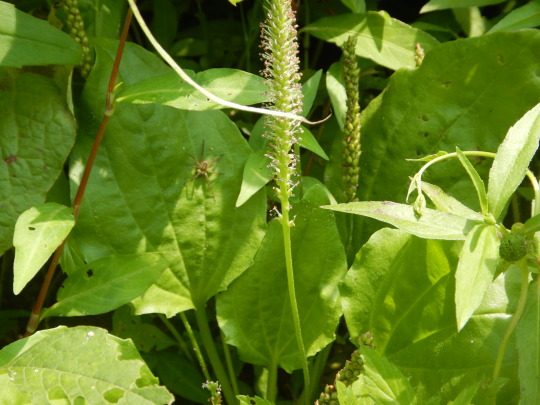

^bottom pic from MN wildflower blog. via Peter M. Dziuk
in the mudflat, Plantago rugelii (fairly sure based off of red base) or the floppy red based broad leaf plantain. If you find a plantain in a mudflat, it usually is stick like or narrow leaved with really unique flower structure that is more bristly looking on average, these tend to be our natives, Heartleaf is more of a gravel scour and flat wet wood species. Much like heart leaf, rugel's also has a broadleaf compared to the rest of the wet loving species. The base of this plant were barely red and the flower morphology was very bristle like is why I think the ID is correct, plus the niche affiliation; with this said, the P. major is also a generalist and can have red when stressed by summer heat on it's petioles so it would of been better to go off of the bulb like base instead of the intuition while kabrewing on the Little Miami. The other way to tell is that the ovules stick more erect.



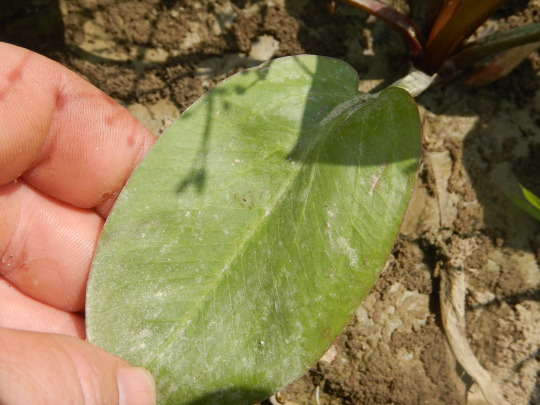


Alisma spp. or rather I think it's A. triviale is a common mudflat species that can take longer partial submersion but doesn't like extended turbulence. Heart leaved small flowered northern water plantain.
#ohio#botany#wildflowers#mimulus ringens#mimulus#galinsoga#galinsoga quadriradiata#phyla lanceolata#phyla#alisma#alisma triviale#plantago rugelii
83 notes
·
View notes
Text
‧。⋆ Dangerous Herbs to Watch Out For ⋆。‧
As part of my journey into my craft, I’ve spent a lot of time diving into herbalism. When I started creating content, I knew this was a topic I wanted to explore deeply. And what better way to begin than by talking about some herbs we should steer clear of?
Herbalism can be a beautiful and powerful part of spiritual practice, but it’s important to remember that not all plants are safe to use. To help you navigate this, here’s a list of some dangerous herbs, along with their common names, scientific names, and potential adverse effects. Some of these herbs can be dangerous not only when ingested but also through skin contact or inhalation, so always prioritize safety and respect when working! 🌿
❀ Aconite
Other Common Names: Monkshood, Wolfsbane, Aconitum
Scientific Name: Aconitum spp.
Adverse Effects: Heart palpitations and arrhythmias, hypotension, nausea, vomiting, abdominal pain, respiratory system paralysis, and death.
[Notes]
Toxic even if absorbed through the skin. Always use gloves when handling, and never ingest.
❀ Areca Nut
Other Common Names: Betel Nut
Scientific Name: Areca catechu
Adverse Effects: Worsening of mental health issues in people with existing psychiatric conditions. Can cause cancer in the mouth, throat, esophagus, and stomach when chewed.
[Notes]
Primarily dangerous when chewed or ingested. Avoid all oral use.
❀ Lobelia
Other Common Names: Asthma Weed, Pukeweed, Vomit Wort
Scientific Name: Lobelia inflata
Adverse Effects: Toxicity, rapid heartbeat, hypotension, coma, death.
[Notes]
Toxic if ingested, handling large amounts or inhaling powdered forms can also be harmful.
❀ Atractylate
Scientific Name: Atractylis gummifera
Adverse Effects: Liver damage, nausea, vomiting, epigastric and abdominal pain, diarrhea, anxiety, headache, convulsions, often followed by coma.
[Notes]
Most risks come from ingestion. Avoid using this plant in any form.
❀ Country Mallow
Other Common Names: Heartleaf, Silky White Mallow
Scientific Name: Sida cordifolia
Adverse Effects: Heart attack, heart arrhythmia, stroke, death.
[ Notes ]
The stimulant properties can cause severe health issues if ingested or used in medicinal preparations.
❀ Dan Shen
Other Common Names: Red Sage, Chinese Sage, Tan Shen
Scientific Name: Salvia miltiorrhiza
Adverse Effects: Potentiates warfarin activity, leading to excessive anticoagulation and bleeding.
[Notes]
Hazardous when ingested, especially for those on blood-thinning medications.
Thank you so much for taking the time to read this! 🌟 I hope this list helps you stay safe as you explore the world of herbalism and incorporate it into your craft. Remember, knowledge is power, and approaching plants with respect and caution is key to unlocking their full potential.
You can find more posts like this on my patreon!
https://www.patreon.com/posts/dangerous-herbs-116405313?utm_medium=clipboard_copy&utm_source=copyLink&utm_campaign=postshare_creator&utm_content=join_link
If you have any questions or thoughts, feel free to share them—I’d love to hear from you! Let’s keep learning and growing together. 🌿✨
17 notes
·
View notes
Text
Camera
I think that Wilford would have polaroids everywhere since his memory is shit, just so he doesn't forget things.
Wilford Warfstache x GN!Reader, TW: none Words: 636
The autumn air brushes past you, making the leaves swirl along the ground and dance with the chill. You shove your hands in your pockets, trying to keep them warm. Wilford notices your shivering, pulling a scarf out of who even knows where, and wraps it around your neck as you put on the matching gloves.
“Can’t have you getting cold now, pumpkin. There’s sights to see!”
He’s quick to snap a photo of you before you’re finished straightening yourself out. The camera prints the polaroid instantly, and he looks at it lovingly. You try to sneak a glimpse of it over his shoulder, but he hides it away before you can look.
“Ahhp-up-up! No ruining the surprise!”
“Wilf, it’s a picture of me that you took as I was adjusting my scarf. What sort of surprise could there be?”
“Shhhhh, seeeecrets.”
You can’t tell if he’s being obtuse on purpose or not, but you just take his arm and keep walking, looking out upon your surroundings. The trees rustle as the clouds begin to hang overhead, letting only small bits of blue sky through. As long as you can feel Wilford next to you, you’re far more focused on the natural scenery surrounding you. Especially when that was the sole reason Wilford dragged you out here in the first place.
You feel his mustache against your forehead as he leans over to give you a kiss, squeezing your arm, and double checking that you’re still warm. There’s the click of a camera again, and you glance over to see him photographing a squirrel happily munching on an acorn it found. It stares at you once you notice it, and Wilford takes the moment of it sitting still to capture another shot of it.
“Perfect! An ideal specimen of sciurus carolinensis! And holding a quercus spp, just like the movies!”
“Oh? Which movie, Wilf?”
“The one with the little skittery one, with all the ice. His love for that acorn destroys the world, and I think that’s beautiful. Almost relatable, in a way…”
He trails off as you try and figure out what movie he could possibly be talking about. Every once in a while you hear the click of his camera, find what he’s photographing, and go back to what you were looking at. You have to pull the scarf over your face after a while, shuddering at the cold. Wilford looks at you, concern washed over his face.
“Oh pumpkin, we gotta get you indoors, stat.”
He scoops you up before you can protest, spinning you around in his arms and you appear in his living room. He’s careful to pull the scarf away from your face, frowning at how red your nose and cheeks are.
“Well we can’t have that, I’ll make us some hot choccies!”
Without another word, Wilford disappears into the kitchen, leaving you to get comfortable and warm. You’re quick to change out of your outside clothes, creating a cocoon for yourself with the massive pile of blankets by the couch. Wilford returns with mugs of hot chocolate topped with whipped cream, candy canes, and sprinkles. You happily take yours as he joins you in your comfort. He sets his camera on the table, and you catch a glimpse of the stack of photos from your walk. In the middle of each frame rests you, the focus of every photo, spare the squirrel.
“So this was the surprise?”
You pick up the polaroids, thumbing through them carefully. Wilford gets quiet, sighing.
“My memory isn’t quite what it used to be… and I want to make sure I never forget my favorite memories of you.”
You look up at him, kissing his cheek as you pull him closer.
“You won’t, because I won’t let you. I promise.”
“Thank you, my dear.”
#wilford warfstache#wilford#wmlw wilford#wkm wilford#wkm wilford warfstache#wkm#who killed markiplier#wmlw#wilford mother lovin warfstache#colonel mustache#chaoswrites
14 notes
·
View notes
Text

It says: Turn Lactobacillus spp. into your favorite character. Don't forget to name it!
In bioreactor we got a bonus and of course I drew Mayuri. I forgot to name him 😭.
Lactobacillus Mayuritae
16 notes
·
View notes
Text
VA Native Fish Hunting - 24

Today was a fun trip. I've been to this beach a number of times for glass hunting (successful) and for shark tooth hunting (not so successful), but not for dedicated fishing. I did find a couple of neat finds, which goes to show you it pays off to explore old places with a new eye.

Last hunt, I included a picture of some sea lettuce (Ulva spp) I found but thought it lacked some context on how it naturally looked since I had it above water level. Using some advice from a tumblr follower, I brought my acrylic holding container with me. Sea lettuce is SO COOL when submerged and thought it was worth including a picture here.
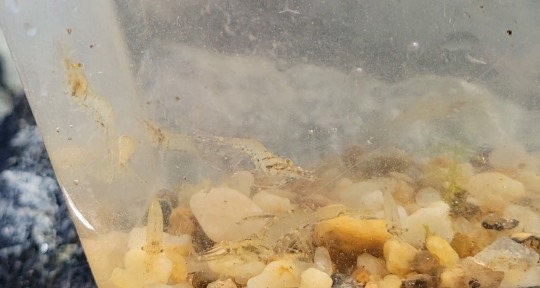
Lots more Glass Shrimp (Palaemon spp) here. By contrast with the sea lettuce, glass shrimp are harder to get photos of when submerged in their home (murky) water. Still. Neat critters.
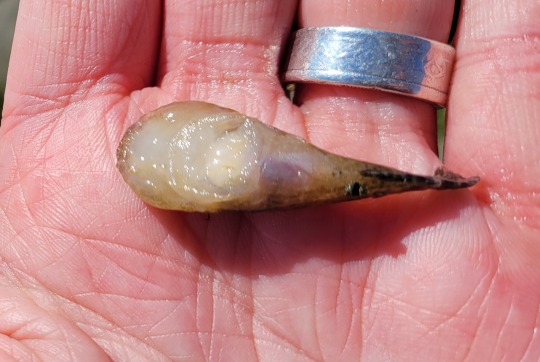

This Skilletfish (Gobiesox strumosus) was washed up/deceased, sadly. But still interesting because a) it's my first time finding this species in this area of the river, and b) it being dead means I can show off their suction cup like belly.

A first for me! This American Eel (Anguilla rostrata) is the first specimen I've caught of this species. Around 5 or 6 inches long, it was absolutely restless looking for a way out - which reflects how eagerly they escape the home aquarium. They also are thought to live upwards of 80 years, so I hope this dude has a nice long life!

Fair enough, I was unsure if I would catch anything, so I found this inlet to the river I was fishing on and tossed in a few minnow traps. Might as well hedge your bets, right?

I caught a few Eastern Mosquitofish (Gambusia holbrooki) here, and unsurprising as they are among the most common species in this area. Freshwater? Brackish? Saltwater? You'll probably find some. But I love the mottling coloration on this fella - I think they are handsome in a subdued way.
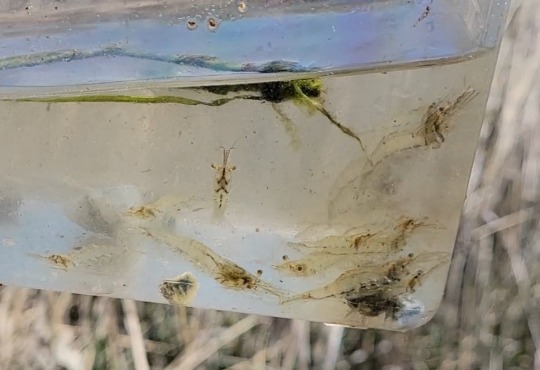
More shrimps! A little easier to see here butttt still a little hard with stirred up silt.

I probably caught about 20 Mummichogs (Fundulus heteroclitus) aross my traps. No exaggeration, some of my favorite native fishes in this area - especially for home use but I think they are pretty in general.

Most of the Mummichogs were smallish but this dude was a chonker. Mine at home are pushing 5 inches but at 3.5 or so, this killifish is still impressive. Love the slight teal coloration the big ones have sometimes.
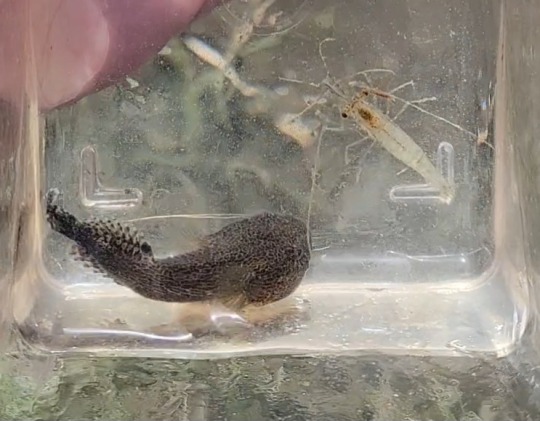
Last find was this live Skilletfish! That coloration is fantastic, much better than the last few washed out ones I've come across. This guy more than any other catch today has tempted me to start up a native biotope tank. What a cool cat!
46 notes
·
View notes
Text
How to Download Digital Witch Mayura
@lolmeowaj

First you have to download SSP, the program you can use to run her.
Once downloaded, attempt opening SSP by pressing the ssp.exe file
If it's running, this character should appear on the screen. Please make sure you don’t leave ssp in your downloads or you might get a fatal error and have to reinstall. I suggest just putting it on the computer itself.

Mayura Download
To change her to Mayura, download the RAR file from this site. Once downloaded, extract her files and put the "Mayura_v350" file into the "ghost" file of SPP. You can change the file name if you'd like.


Now, try running the program again and press Mayura in the "call ghost" section

Now, she should appear on screen. You can close the other ukagakas if you'd like.

Mayura English (Poor English, Though)
Go here and click on Mayura at the bottom, and then drag and drop the file onto Mayura on your desktop. It should show you a few options, and then she'll begin speaking english.
Mayura Outfits (Shells)
You can obtain most of her alternate outfits here. Just drag and drop the items and then go to "shells" and it should be added.

And that's mostly it!! You can download other Ukagaka from other archives online, just be careful what you download so you don't download any malware!! And here's other Ukagaka information from the archive here!

#digital witch mayura#2000s web#ukagaka#webcore#mayura#windows 11#moecore#moe#tutorial#kawaii#anime girl#mayura ukagaka
51 notes
·
View notes
Text

🪐saturn constellation
osdd system of an unknown headcount
npd + asd + gad + bpd
freq fronters:
celeste (it/its): #🪽
ej (he/it/they): #🔪
wisp (shx/hxr, xey/xem): #🐦⬛
collective interests:
k-pop, crochet, pokemon, robots/tech
byf:
we have no dni on our account, but be aware that we are anti-harassment, propara (neutral contact), accepting of radqueer identities, and pro endogenic systems. if you do not like this, or disagree in any way, we advise to just block and move on, or be respectful in interactions. follow your own dni.
please dont bring uninvited syscourse onto our blog unless it is explicitly stated in a post. then you are allowed to talk about it, there and only there.
this blog will be mostly reblog heavy, if you’re looking for original posts i/we would recommend checking out the alters own blogs (of course they will reblog things as well, though.)
extra:
our spp is @/celesticcollective, but we are keeping info private for now due to a recent event.
discord is @/l0vest4rz, and is mainly run by celeste, although other parts may post as well.
pluralkit is pk;s catbnj, but alter info is also kept private for the same reason as above.
tellonym is below; send us things

#intro post#plural system#plurality#pluralgang#actually plural#plural community#pluralpunk#plural stuff#system stuff#sys#osdd system#syspunk#sysblr#system things#pro endo#endo safe#traumaendo#no dni
11 notes
·
View notes
Note
okay with the graffiti au thing (specifically Paul’s tag) how exactly does it work? Like you said the initials are spp, but neither Soda or pony’s tag starts w/ the letter of their first name (cola and dreamer) so does it matter? (and also, I don’t think I’ve read all your posts w/ Paul, so what’s your characterization of him, what’s important to/about him?)
LOL ok that was said in a moment of weakness bc i just kinda goofed and used their real names bc idk what paul’s tag name is yet, i took it back in the tags of that post specifying 😭 anyway whatever paul’s ends up being ponys would be written with a lowercase letter! yes in graffiti it does matter i just goofed sorry to make it confusing lmfaooo. when i come up with paul’s i think i’ll draw out their tag names and crew tag for the .2 people who are interested!!!
also tbh this is not my usual paul characterization so i don’t really know yet! it’s obv not part of my regular au so im not super sure but i will think on it 🙂↕️
#this is purely a goofy for fun au that will probably never get written bc flopping is so painful lol but#will think on that#thank u for the ask i love yapping about them#taggers au#the outsiders#asks
8 notes
·
View notes
Text
I am all for creative sushi, but not when the creator doesn't fully understand the ingredients. A sushi restaurant in Montana served people sushi with raw and very undercooked morel (Morchella spp.) mushrooms on it. Over fifty people ended up sick with gastrointestinal upset, and two people actually died. Other restaurants that served the same batch of morels, fully cooked, had no such issues, and there was no evidence that there was any mishandling of the morels that could have caused a bacterial or other contamination. So it's pretty clear that the raw morels themselves were to blame.
Yes, there are a few wild mushroom species you can eat raw, and only in small amounts). No, Morchella are not among them. Morels have a toxin in them that's neutralized by cooking; Paul Stamets theorized that it's hydrazine, but no one has been able to isolate hydrazine in a morel yet so that's not a done deal. Whatever it is, there's enough of it that it tends to give people nasty gastrointestinal upset when they eat raw morels, even in small quantities. This is the first I've heard of people dying from it.
It's not the only time I've heard of people dying from consuming a commonly-considered-edible mushroom, though. There were two separate incidents--2004 and 2009--in which several people who ate angel wing mushrooms (Pleurocybella porrigens) died of encephalopathy. Now, it did turn out that most of the people sickened had pre-existing liver and/or kidney issues. And a 2011 study identified an unstable amino acid, now named Pleurocybellaziridine, as the possible fatal factor that was found in large quantities in angel wings. It could be that the culprits were flushes of these mushrooms with abnormally high amounts of Pleurocybellaziridine. But you can't tell how much of a given metabolite a given mushroom has just by looking at it, and so that raises enough of an alarm for me personally that as a forager I just put angel wings on the "do not eat" list.
Will I continue to eat morels? Yes. The toxicity associated with raw morels has been known for a long time, and there have been no recorded issues with thoroughly cooked morels (the angel wings were also cooked, meaning the toxin is not thermolabile.) And as mentioned before, almost any edible wild mushroom is going to give you gastrointestinal issues if you eat it raw. The mushrooms you get at the store are a weird outlier that can be safely eaten raw. And by the way, button mushrooms, criminis, and portobellos are all the same species--Agaricus bisporus--at different stages of development.
This is why I emphasize in my foraging classes that you should always cook your wild mushrooms thoroughly, and if you're trying a new species for the first time only eat a small amount and then wait a few days to make sure you don't have any reactions. As the saying goes, there are old mushroom hunters and there are bold mushroom hunters, but there are no old, bold mushroom hunters.
#mushrooms#mushroom hunting#mushroom foraging#foraging#edible mushrooms#morels#Morchella#fungi#fungus#mycology#poisonous mushrooms#nature#food#foragers#wild mushrooms#sushi#Montana#food safety
1K notes
·
View notes
Text
A writer’s guide to forests: from the poles to the tropics, part 8
We’ve made it to the tropics. I hope you enjoyed this, and found it useful in your writing.
Tropical rainforest
Probably the most recognizable of forest environment, and among the most threatened.
Location-Latin America, Africa, Australia, Indonesia, and the Pacific islands in between the tropics of Cancer and Capricorn. Many forests have been felled or heavily altered by human activity.
Climate-Subtropical to tropical, with conditions being wet year round. Rain does not fall all the time, with a defined rainy and dry season. (What’s the difference? Rainy season has rain almost daily while in the dry season you will have to make do with high humidity and morning fog) At higher elevations, nights are cooler, though still well above freezing, and mist and rain are more common(this is why mountainous RF are called cloud forests)
Plant life- This is a tree dominated environment. The understory and forest floor are dark, unless trees have recently fallen. Many small plants are arboreal, nestled in the upper branches of trees. Vines and other climbers use larger plants as scaffolding. In areas of poor soil, tropical pitcher plants (Nepenthes spp.) and bladderworts (Utricularia spp.) get much needed nutrients from animal sources.
Animal life- Rainforests are the most biodiverse environments on Earth. Insects are everywhere, as are the animals that eat them. Birds and primates can be found from the canopy to the forest floor. The moist conditions make for an ideal habitat for frogs and toads. Apex predators are the big cats-think jaguars, tigers and leopards. Some species of herbivores can be quite large; Africa is home to gorillas and forest elephants, while the island of Borneo, Sumatra, and Java support rhinos and orangutans (though the further of these species is uncertain)Waterways are home to all sorts of fish(there are more species in the Amazon river than in the Atlantic Ocean), and larger animals, such as otters, crocodilians, and even river dolphins. Isolated islands have far fewer mammal species, with bats being the only ones, but hardy insects, reptiles, and birds making up the majority of the biomass. Deforestation and the introduction of invasive species have caused the extinction of many animal species, with island forests being the hardest hit.
How the forest affects the story- When one thinks of societies in the tropics, it usually is through the lens of western stereotypes designed to shock audiences and give ‘civilization’ something to conquer. Avoid this at all cost! There is more to the forest. Before the Spanish conquest, the Amazon was home to cities, and the agricultural societies of New Guinea are believed to be contemporaries with the farmers of Mesopotamia.
Grain does not do well in the tropics, so farming will be based around plants such as açaí, coconuts, taro, breadfruit, bananas, and manioc. These can be supplemented by hunting and fishing, but long term storage will have to be addressed. High humidity is a breeding ground for bacteria and fungi, so organic material will have to be kept dry so they don’t rot. The concentration of microorganisms also means that good hygiene is needed to avoid disease.
Settlement will always cause disruption, and the extent of your character’s activities can have a big impact on the forest, and your story. And remember, the activity of a small village will be different to that of large scale logging. Management, use, and abuse of the rainforest can be a driving factor in the plot. How will your characters react? Is the threat from outside or from within? The destruction of the rainforest is one of the main factors, along with unmitigated greenhouse gas emissions that is causing the current climate crisis. Can your characters do better? Or will you create a cautionary tale that shows us the grim future we are currently barreling towards? (That choice, my dear writers, is completely up to you)
#writing#creative writing#writing guide#writing inspiration#writing prompts#writer#writers#writer on tumblr#writeblr
33 notes
·
View notes